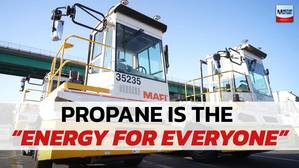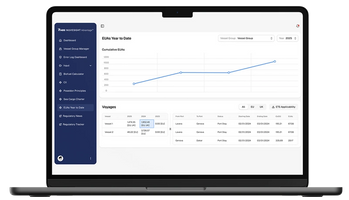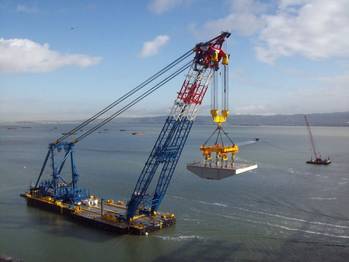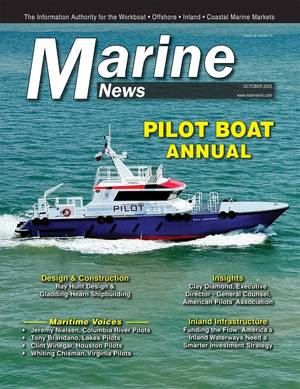USCG Research Center Warns of Lithium-Ion Fire Hazards at Sea
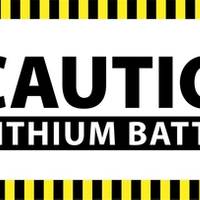
As maritime industries accelerate toward electrification, the U.S. Coast Guard Research and Development Center (RDC) has issued a warning: lithium-ion batteries—the same technology powering the global shift to hybrid and all-electric vessels—pose a unique and evolving threat when things go wrong. The April 2025 white paper, Lithium Battery Fire Hazards in the Maritime Environment, lays out the risks, firefighting challenges, and post-incident dangers associated with lithium battery fires at sea…
Energy Storage and New Fuels Work Together as One on Vessels
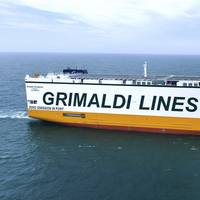
There’s an obvious fuel saving advantage, but partnering energy storage systems with new fuels brings other advantages too.There’s a new generation of vessels emerging which is exemplified by Grimaldi’s PCTC Grande Shanghai, claimed to reduce fuel consumption by 50% compared to previous-generation car carriers, and the NCL Vestland, a container feeder vessel similarly claimed to reduce energy consumption per TEU per nautical mile by 63%.What these vessels have in common is a propulsion system that combines energy storage systems and new fuels.As Henrik Helgesen…
Corvus Energy Secures Growth Capital
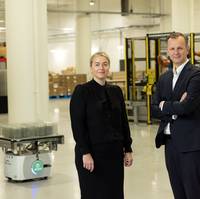
Energy storage system (ESS) supplier Corvus Energy has secured a $60 million growth capital injection from a group of blue-chip international investors. Morgan Stanley Investment Management led an investor consortium that includes Just Climate and J. Lauritzen.Founded in 2009, Corvus Energy has pioneered maritime ESS and today supplies more than half of the world’s zero-emission vessels. The company has delivered over 1,300 hybrid or all-electric ESS installations worldwide. This represents 1…
Batteries: Looking Beyond Spinning Reserve
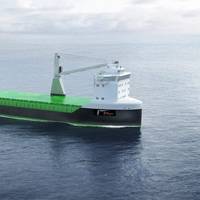
Mia Elg, R&D Manager at Deltamarin, says there’s not many of the company’s new designs, no matter what the vessel type is, that don’t include batteries.Installing smaller battery capacity to a diesel engine driven vessel with electrical power train can enable spinning reserve. Here, an optimal number of engines can be kept online, and the batteries can work as a black out preventer. This can save, depending on the type of the ship and operation, anything between a few percent…
ABS, Partners Launch Electrification and Battery Safety Alliance

Representatives from American Bureau of Shipping (ABS), University of Michigan, Singapore Institute of Technology (SIT) and Sea Forrest Technologies have signed a memorandum of understanding to explore batteries and electrification in maritime applications.The agreement establishes a cooperative framework for the organizations to collaborate on academic and scientific projects related to battery technologies and electrification capabilities, with activities to include the development…
Management-Led Buyout Creates Maritime Battery Firm Nereida Energy

A management team led by industry veteran Geir Bjørkeli has completed the buyout of Yinson GreenTech's Norwegian subsidiary Yinson Green Technologies, establishing an independent company under the new name Nereida Energy.The move positions Nereida to advance battery solutions for the maritime industry, drawing on the leadership team’s deep sector expertise.Bjørkeli, formerly CEO of maritime battery specialist Corvus Energy and with past senior roles at Rolls-Royce and Huisman…
ABS Report Explores Emerging Maritime Battery Technologies
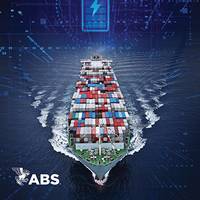
The latest advances in battery technologies have the potential to not only support direct electrification and the integration of alternative fuels but also offer pathways to enhance operational efficiency and reduce fuel costs, according to the latest analysis from ABS.The report, Emerging Battery Technologies in the Maritime Industry Volume II expands understanding of the inherent safety risks associated with emerging battery systems, particularly thermal runaway (TR) and gas…
Plug and Play: Fleetzero, Glosten Team on Record Hybrid Electric Vessel
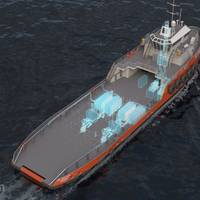
As battery technology evolves at speed, so too do developments on maritime's increasing use of the energy packs for hybrid and pure electric applications. Today, Fleetzero, a developer and manufacturer of modular propulsion platforms for hybrid and electric ships, selected Glosten to design what is expected to be the world’s longest-range hybrid electric vessel. Glosten has been working with Fleetzero on the retrofit of a Lightering Support Vessel owned and operated by AET. This…
Pure Battery Harbor Tug Project Launches in Japan
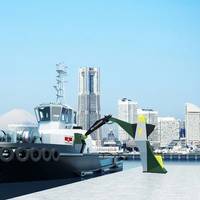
Tokyo Kisen Co., Ltd. and Marindows Inc. launched Japan’s first pure battery-powered EV harbor tugboat development project.This EV harbor tugboat will be operated in the ports of Yokohama and Kawasaki.In January 2023, Tokyo Kisen put into service “TAIGA” which was the Japan’s first series-hybrid electric-powered tugboat equipped with a large-capacity 2,486 kWh battery. Building on two and a half years of operating experience with electric-powered tugs, this project advances to…
SASHA Coalition and ZESTAs Unite on Green Solutions
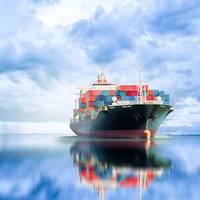
Industry coalitions ZESTAs and the SASHA Coalition have announced a partnership to drive policy and industry action on green shipping technologies.The two coalitions, collectively representing 70 leading companies, have committed to combining their efforts to advocate for policy supporting absolute zero emission solutions combining hydrogen, battery-electric and wind propulsion technologies. Aurelia Leeuw, Director of EU Policy at the SASHA Coalition, said: “Pooling our expertise to drive maritime decarbonization, the SASHA Coalition and ZESTAs together are more than the sum of our parts.
US Coast Guard: Safety for Lithium-Ion Battery System Installations
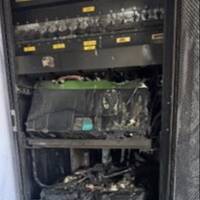
An integrated Li-ion battery bank recently caught fire onboard an inspected passenger vessel when loosely crimped lugs overheated. While no one was injured and the vessel sustained minimal damage, this casualty highlights safety hazards unique to Li-ion batteries. All integrated (installations used for propulsion and electrical power) Li-ion battery systems on inspected vessels must undergo engineering plan review, be fitted with supporting safety systems, be tested and inspected at installation and periodically afterward…
AYK Energy Secures DNV Approval for Latest Range of Marine Batteries
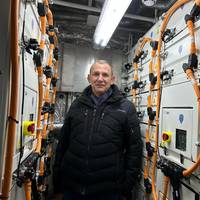
AYK Energy is set to ramp manufacturing of its latest range of marine batteries after receiving type approval from DNV.DNV has approved AYK Energy’s Pisces, Pisces +, OrionAN, and OrionAN+, as well as aluminum versions of AYK’s legacy modules setting new standards in clean energy marine propulsion.AYK Energy founder Chris Kruger said the approval is a game changer making marine battery technology more affordable driving adoption.The approval enables the company to install a 10.4MWh…
EST-Floattech Expands Octopus Portfolio with New Battery Modules
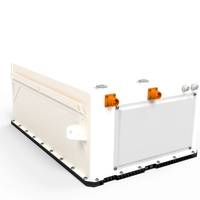
EST-Floattech, Dutch energy storage systems provider for maritime and industrial applications, has expanded its Octopus Series with the introduction of Lithium Iron Phosphate (LFP) battery modules.With the latest addition the company aims to address the market demand for battery systems based on another chemical configuration.The new Octopus LFP ESS is engineered for large scale battery systems, and works together seamlessly with the Octopus Series Battery Management System (BMS).The newly introduced LFP is based on the advancements made in recent years…
Maritime Batteries 101: What to Consider When 'Going Green'
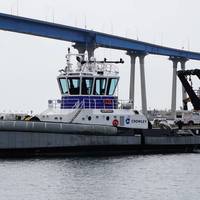
In the current pathway, global shipping greenhouse gas (GHG) emissions are forecast to rise in this decade and eventually return to 2010 levels by ~2050.The chart represents the three scenarios for shipping emissions developed by the International Energy Agency (the IEA) and adds in the IMO Strategy targets for emissions reduction. The IEA’s aspirational case (i.e. what governments and companies aspire to do rather than are actually doing – that is the current pathway) closely mirrors the IMO’s 2023 updated strategic direction.
Foreship Supports Dual Chemistry Battery System Retrofit for Wasaline
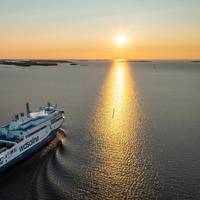
Naval architecture and engineering consultancy Foreship is supporting Wasaline in delivering a battery upgrade on MV Aurora Botnia that will see the ferry’s energy storage capacity increase nearly sixfold. The retrofit will combine two battery chemistries in a hybrid solution that is expected to cut annual CO₂ emissions by up to 23%.Building on a long-standing relationship with Wasaline that began during the vessel’s initial design phase, Foreship provided technical and strategic support for the retrofit.
Bureau Veritas Calls For Standardized Safety Regulations For Electrification Technologies
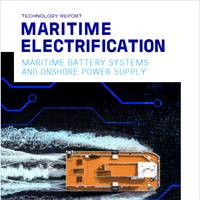
Bureau Veritas Marine & Offshore (BV), a leader in testing, inspection, and certification, has called for greater clarity regarding standardized safety regulations that will advance the development of maritime electrification technologies, following the publication of a new technology report, Maritime Electrification: Maritime Battery Systems and Onshore Power Supply. The report explores how electrification technologies—specifically Energy Storage Systems (ESS) and Onshore Power…
Corvus Battery System Tapped for New LNG Container Vessels
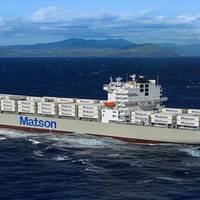
Matson Navigation Company’s three new 3600 TEU Aloha Class containerships, the largest container ships built in the United States, will use Kongsberg Maritime Hybrid Electrical Systems that incorporate Corvus Energy Orca ESS, the ships designed by KOMAC.With a carrying capacity of 3,600 TEU, the 854-ft (260-m) containerships are the largest of the type being built in the U.S. Matson is expanding its fleet of two Aloha Class vessels with the addition of three, new Jones Act-compliant container ships.The vessels will feature a next-generation…
Stena Line Introduces Wind-Assist RoRo Concept
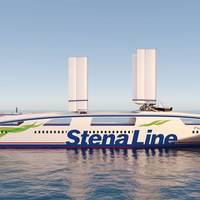
Stena Line has announced the concept for a new generation vessel: Stena Futuro, a 240-meter-long roro intended for transporting semi-trailers and cars.The hull and superstructure have been optimized to achieve the most efficient use of cargo space possible. At the same time, low weight and optimized hydro- and aerodynamics are central to achieving low fuel consumption.In addition to the vessel’s design, Stena Futuro will be equipped with technology to limit its environmental footprint.
Batteries Use in Vessels - Current Situation, Future Prospects
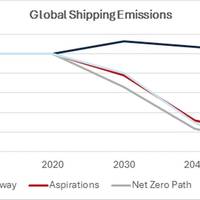
On the current pathway, global shipping greenhouse gas (GHG) emissions are forecast to rise in this decade and eventually return to 2010 levels by ~2050.The chart represents the three scenarios for shipping emissions developed by the International Energy Agency (IEA) and adds in the IMO Strategy targets for emissions reduction. The IEA’s aspirational case (i.e. what governments and companies aspire to do rather than are actually doing – that is the current pathway) closely mirrors the IMO’s 2023 updated strategic direction.
AYK Energy gets Contract for Battery-Methanol Tug
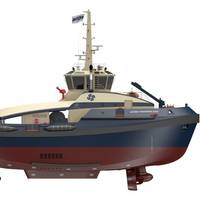
AYK Energy was contracted to manufacture and supply the 6MWh battery that will power the world’s first battery-methanol tug, to be built at Uzmar for Svitzer. This is AYK’s first contract with Uzmar. The 6MWh battery-powered tug is planned to be deployed in Gothenburg and provide zero-emission services across a quarter of Svitzer’s operations in the Swedish port. The tug is based on Svitzer’s TRAnsverse tug design and the battery will be supported by dual fuel methanol engines…
Kongsberg Embarks on Hybrid Conversion of Swedish Operator’s Ferry

Kongsberg Maritime has secured a project to convert the double ended car ferry MF Hamlet to emission-free battery powered operation.The ferry, operated by Öresundlinjen, on the route between Helsingør, Denmark, and Helsingborg, Sweden, will see a major upgrade including installation of large battery packs and new permanent magnet motors for the azimuth thrusters.The primary goals of the project include achieving zero emissions, enabling full electric operation with batteries, and having mechanical propulsion redundancy.The ferry will utilize high-voltage charging in port…
Lloyd's Register Grants Type Approval for Corvus’ Marine Battery System

Corvus Energy has secured Type Approval from Lloyd’s Register (LR) for its Dolphin NxtGen marine battery system. The LR Type Approval confirms that the energy storage system (ESS) complies with the most stringent rules, regulations, and safety requirements in the industry, as defined by one of the leading maritime class societies. The Corvus Dolphin NxtGen Energy design features draw on the Corvus Orca ESS, which the company claims is the world’s most widely installed marine battery system.These include passive single-cell Thermal Runaway (TR) isolation and a TR gas exhaust system.
Brittany Ferries Vessel gets World’s Largest Marine Battery
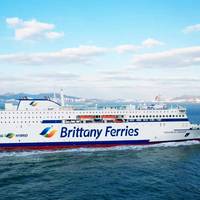
AYK Energy has completed the installation and sea trials for the second Brittany Ferries vessel to feature the biggest marine battery ever built.AYK installed the 12 megawatt-hours (MWh) Orion+ battery into Brittany Ferries Guillaume de Normandie hybrid electric ferry after installing the same battery system aboard its sister ship Saint-Malo at China Merchants Jinling Shipyard Weihai. The vessel has now completed its sea trials and is heading to Britain, where it will operate the Portsmouth – Caen route.


